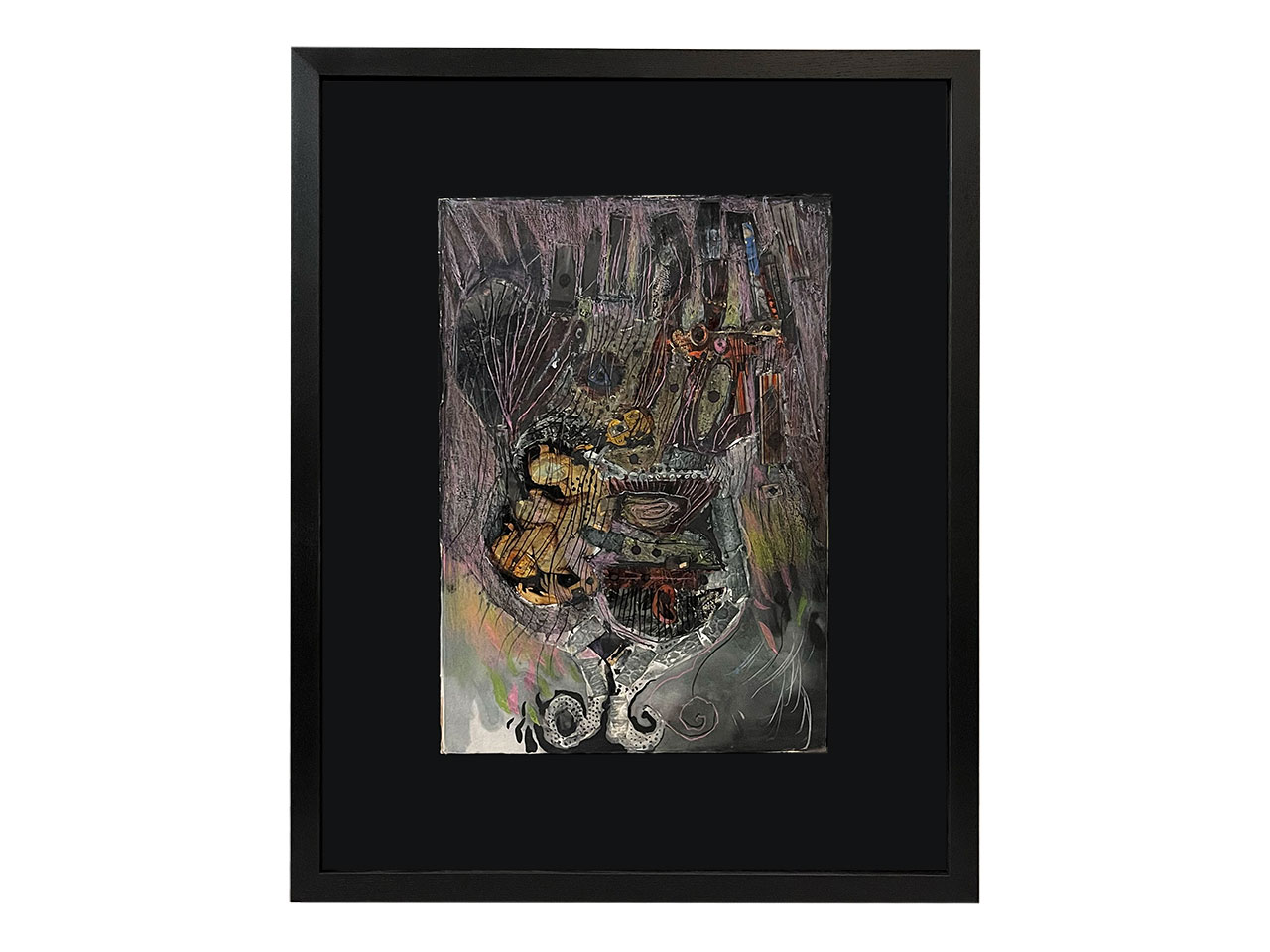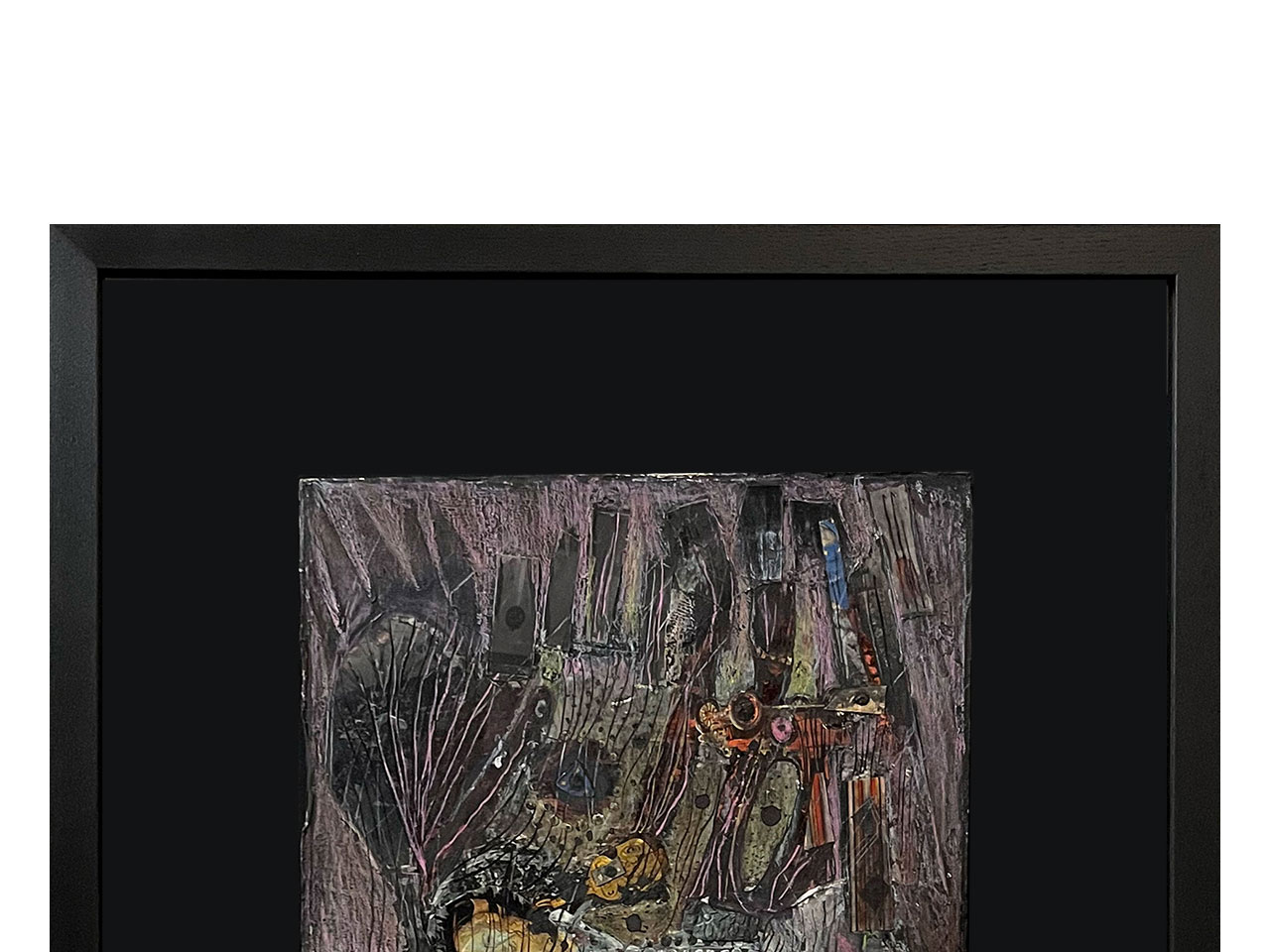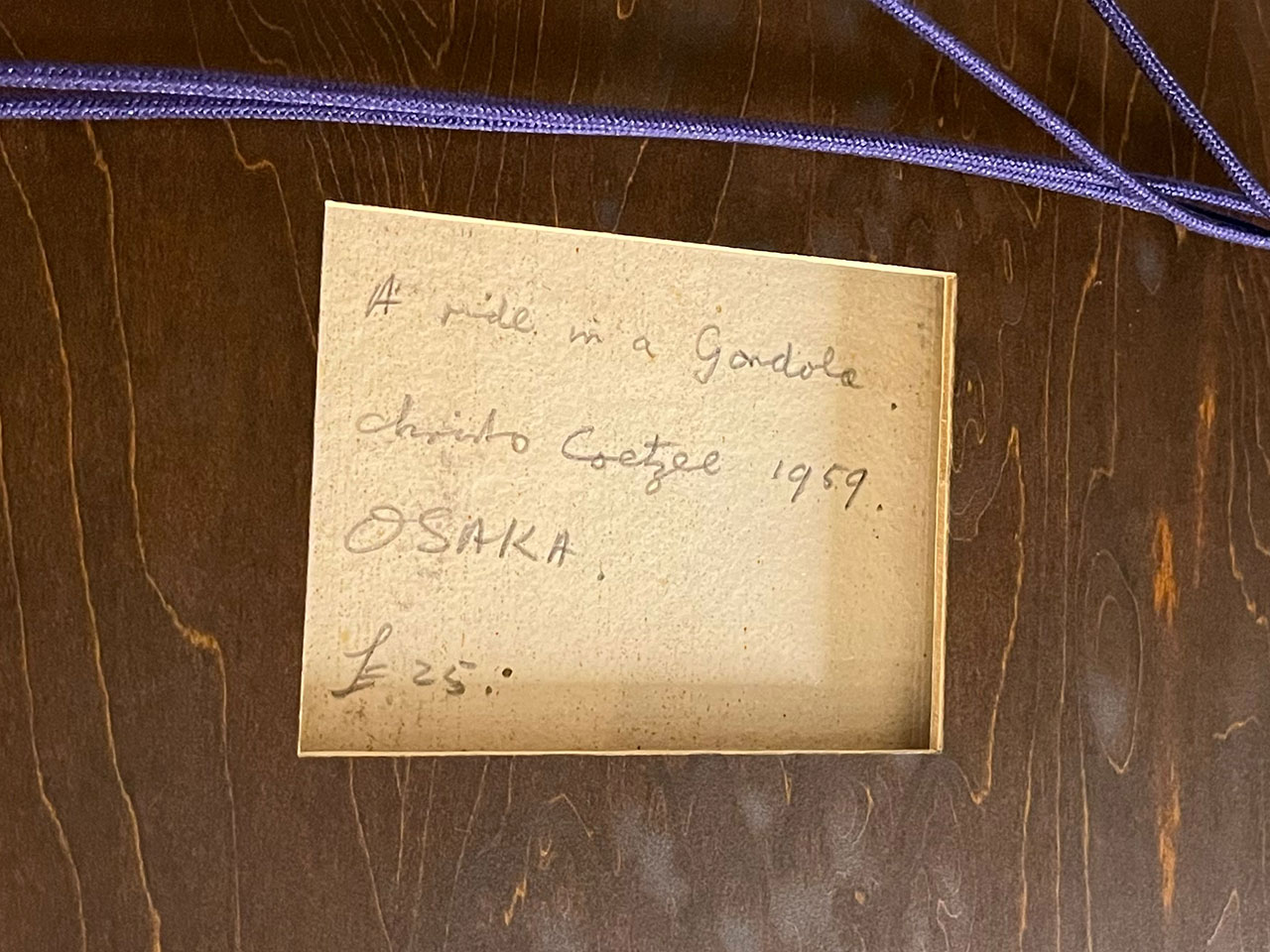クリスト・クッツェー/Christo Coetzee
クリスト・クッツェー(1929~2000)は、南アフリカ共和国出身の芸術家です。主に、非芸術的な既製品や素材を寄せ集めて作品化するアッサンブラージュの作家として知られ、1950年代から1960年代のヨーロッパや日本で巻き起こった前衛芸術運動にも密接に関わっていました。
ヨハネスブルクに生まれたクッツェーは、パークタウン男子高等学校で芸術に目覚め、1946年から1950年にかけて在籍したウィトワーテルスランド大学では、演劇の舞台装置や衣装などをデザインしていました。大学を卒業した年に初めての個展を開き、1951年からはロンドンのスレード美術学校で写実主義の画家、ウィリアム・コールドストリーム(1908~1987)のもとで学びました。一時はヨハネスブルクに帰国して鉄道会社などに勤めるものの、ほどなくしてロンドンに戻り、自身の作品を評価してくれる人々の後押しのもとで初の海外個展を実現させ、徐々にその才能を認められていきます。1956年以降は、イタリア、パリ、日本、スペインと各国を飛び回り、名だたる芸術家や評論家たちと出会いました。とりわけ、パリでジョルジュ・マチュー(1921~2012)を通じて知り合ったミシェル・タピエ(1909~1987)からは、アンフォルメルの影響を大いに受けています。また、タピエによってその存在を知らされていた「具体美術協会(以下、具体)」との、1959年から1960年にかけての交流も注目に値します。クッツェーは日本に到着するやいなや、「具体」のリーダーである吉原治良(1905~1972)と対面していますが、山崎つる子(1925~2019)の回想によると、「具体」の作品を実際に目の当たりにしたことが大阪に滞在する決め手となったそうです。吉原の家で暮らしていたクッツェーが、お世話になったお礼として、英語を週に一度「具体」の会員たちに教えていたという興味深いエピソードも残っています。1960年には、タピエと吉原が共同で企画し高島屋の屋上で開催した「国際スカイフェスティバル」に招待出品し、さらに雑誌『英語青年』(1959年7月号)の消息欄によれば、クッツェーと吉原が京都の英国文化振興会で「パリのアンフォルメルと大阪の具体」と題した講演会を開いていたことが記録されており、その関係の深さが窺われます。雑誌『ふらんす』(1961年4月号)では、「異色作家クッシアCoetzeeが、アンフォルメルInformelグループの本拠スタドレル画廊 Galerie Stadlerで2回目の個展を開いた」と言及されています。彼の作風についても、画面に無数のピンポン玉や枯れた木の根を貼りつけ、さらには自転車までぶらさげてしまうなど「変わった試みをするので有名である」と評される一方、バロック的な激しさのなかに表現の統一性があるとも指摘されています。
クッツェーは、自身の画業が新たな局面に入った1975年頃、故郷で開催した個展において、自身の作品をずたずたに切り裂き、そうした行為を「具体の行為(Gutai act)」と呼びました。このことから、「具体」というグループやその功績を考えるうえでも見逃せない作家の一人であると言えるでしょう。
Christo Coetzee (1929-2000) was an artist from the Republic of South Africa. He is primarily known as an assemblage artist who created works by gathering non-artistic ready-made objects and materials. He was closely involved in the avant-garde art movements that emerged in Europe and Japan during the 1950s and 1960s.
Born in Johannesburg, Coetzee discovered his passion for art at Parktown Boys’ High School. From 1946 to 1950, he attended the University of the Witwatersrand, where he designed stage sets and costumes for theatre. In the year he graduated from university, he held his first solo exhibition. From 1951, he studied under realist painter William Coldstream (1908-1987) at the Slade School of Fine Art in London. After a brief return to Johannesburg, where he briefly worked for a railway company, he soon went back to London. With the support of those who appreciated his work, he held his first overseas solo exhibition and gradually gained recognition for his talent. After 1956, he traveled to various countries, including Italy, Paris, Japan, and Spain, and met prominent artists and critics along the way. In particular, he was greatly influenced by Informel through Michel Tapié (1909-1987), whom he met through Georges Mathieu (1921-2012) in Paris. Also noteworthy is his interaction with the Gutai Art Association (hereafter referred to as “Gutai”) from 1959 to 1960, which was initiated by Michel Tapié, who informed him about the group. Upon arriving in Japan, he immediately met with Gutai’s leader, Jiro Yoshihara (1905-1972). According to Tsuruco Yamazaki’s (1925-2019) recollections, seeing Gutai’s works firsthand convinced him to stay in Osaka. There is an interesting episode where Coetzee, living at Yoshihara’s house, taught English to Gutai members once a week as a token of gratitude. In 1960, he was invited to exhibit at the “International Sky Festival”, co-organized by Tapié and Yoshihara and held on the rooftop of Takashimaya. Furthermore, according to the July 1959 issue of the magazine “Eigo Seinen” (a monthly magazine primarily for scholars of English language and literature), Coetzee and Yoshihara gave a lecture titled “Informel in Paris and Gutai in Osaka” at the British Cultural Society in Kyoto, highlighting the depth of their relationship. The April 1961 issue of the magazine “France” mentions that “the unique artist Coetzee held his second solo exhibition at Galerie Stadler, the home base of the Informel group”. His style, known for attaching countless ping-pong balls and dried tree roots to the canvas and even hanging bicycles, was described as “famous for unusual experiments”. At the same time, it was noted for having a unity of expression amid baroque intensity.
Around 1975, when his art entered a new phase, Coetzee held a solo exhibition in his hometown where he shredded his own works, referring to this act as a “Gutai act”. This indicates that Coetzee is an artist not to be overlooked when considering the group “Gutai” and its achievements.




作品名:作品
サイズ:39×27cm(1959年 紙にコラージュ)
価格:300,000円
価格は税抜き表示です

